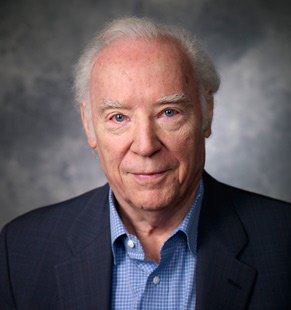
Literary Translation: Toward an Aesthetic of Complexity
by Rainer Schulte
In the last few years, translation has taken on a revitalized importance in a world where non-communication has penetrated all strata of our society. We try to translate our ideas and emotions into words, only to find out that others do not comprehend them or draw conclusions that were contrary to our intentions. The specialized scholar molds the results of his research into semantic and syntactical structures that are often inaccessible to other scholars in the same field. The scientist working on the third floor of a research institute needs to communicate the results of his research to other scientists on the fourth floor—who are working on a different project but need the results from the third floor—and finds out that the frame of reference of his language paradigm is not understood on the fourth floor. Businesspeople travel from one country to another and have to learn that the signs of their body language and social behavior often initiate totally unexpected reactions, and therefore cause embarrassment and uneasiness in situations where communication is of the utmost importance.
In its more narrowly defined semantic connotations, translation is concerned with the transferal of linguistic structures from one language into another: words, sentences, idiomatic expressions, and cultural phenomena are carried from the source language into the target language. We know that there are not exact equivalencies of words between one language and another, or even within the same language. No synonym ever fully replaces another word, and even when words denote the same object in two different languages, the magnetic fields of these words might have distinctly different vibrations in the two cultures. The words for “fire” are quite similar in German and English and even sound alike: Feuer in German and “fire” in English. However, the cultural and metaphorical connotations of Feuer in the German literary tradition appear to be so much more complex than those of “fire” in English. Naturally, the translator is confronted with an almost impossible task.
Translators continue to refine their insights and methods as they engage in the process of transferring the content of situations from the source language to the target language. Many decisions have to be made and many compromises have to be weathered, and the gnawing feeling of never being able to reach the level of a complete and totally satisfactory translation will haunt every translator. In that sense, there are not solutions, only attempts at solutions, whenever a translator, by the very nature of the profession, has to satisfy the linguistic, cultural, and aesthetic demands and traditions of two languages.
Literary texts, especially poetic texts, often reflect very intricate and complex situations of human interactions or abstract thinking. Writers pursue complicated thought processes and try to frame explosive emotional moments into images and metaphors. We know that metaphors, because of their inherent function of generating new insights, can hardly ever be reduced to simple linear and causal explanations. For them to be transferred from one language to another, they must be recreated as a totality and not as isolated recognizable parts. Translators confront these situations and the power they emanate as linguistic manifestations of the writer’s new and modified perceptions of the world. Since most writers and poets move at the forefront of building new forms of understanding, forms that do not fit into established ways of interpretation, translators reenact the various channels of perception and thinking that lead to the formulation of these forms. That process of reconstructing parallel and interrelated thought processes places the highest demand on translators. As there is never only one simple connotation for a word or sentence—and considering the inadequacy of language as a means of communication—the translator’s constant challenge is to rebuild the complexity of a text before it can be readied for translation.
In this respect the translator clashes with established ways of approaching the interpretation of literary texts. Those approaches are based on the assumption that poetic and fictional texts can be explained by simple statements of meaning. The most extreme case of this attitude is reflected in those textbooks that reduce intricate imaginative complexities to the level of multiple-choice questions and answers. If indeed an artistic text could be fully understood by a statement of meaning, then the necessity for such a text would have to be questioned, the artistic text could easily have been replaced by a descriptive comment.
However, literature at its best opens new ways of seeing, introduces new perspectives, expands our insight into the complexity of human relationships, and offers us certain ordering principles in that complexity to give us direction and even reassurance. The function of reading—and consequently of interpreting and understanding—should be the reconstruction of complex relationships and not their reduction to simple formulas. A belief in the possibility of one meaning and only one meaning as the result of an interpretation for a literary work would be contrary to any concept of creativity.
“The poet makes us see things in a different way; he…opens up new aesthetic experiences for us. The translator…recreates the various semantic and emotional connotations that a poet might have injected into a poem…thereby enlarg[ing] the possibility for meanings rather than reducing poetic expressions to one specific meaning.”
– Rainer Schulte
What then can the translator contribute to reverse this specific tendency in current literary criticism? His is the never-ending task of exploring all the possible variations and nuances that emerge from the use of individual words as isolated phenomena and as part of a larger syntactical and semantic structure. The poet makes us see things in a different way; he discovers for us connotations of meanings in words that we had not seen before and thereby opens up new aesthetic experiences for us. The translator—often reversing the scholar’s inclinations and practices—recreates the various semantic and emotional connotations that a poet might have injected into a poem. He thereby enlarges the possibility for meanings rather than reducing poetic expressions to one specific meaning. As the poet endows certain words with meanings they have not had before, he forces us to become involved in the diversity of possible perceptions and expressions. And the goal of all reading, interpreting, and understanding is to comprehend and order the complex relations that we encounter in works of art as parallels to life situations.
Because of the particular attitude that translators assume with respect to a literary text, they might be able to contribute to the revitalization of literary interpretation as criticism. Translators are those strange creatures who always exist in an in-between state. They are neither source language nor target language; they have to place themselves in the middle of that bridge between source language and target language, watching both languages at the same time, never too sure whether they can maintain their position in the middle without violating one or the other. Their position requires them to develop methodologies of interacting, of interrelating, of assessing simultaneous possibilities. To them, words are rarely what they appear to be in a dictionary; words are fragile, not fixed in meaning by themselves but only entities that gain and regain meaning in their relation to other words within the same text. One could easily demonstrate that each fictional and poetic text creates its own lexical environment that is unique, irreplaceable, and not verifiable through the already existing lexical definitions and connotations of meaning. The translator lives through the word as potential linkage to another word out of which semantic fields and directions are created. Each situation demands its own linguistic structure, and since the translator starts with the linguistic appearance on the page, each situation has to be recreated anew with each reading. If we take the Spanish word casa, then our immediate English equivalent appears to be “house.” If that word refers to a casa in the context of a tribe living in the jungle, then the translation as “house” might easily endanger the situational context. “Shack” or “hut” might be more appropriate at that point. It is the translator who establishes that situational contact within the context of the particular text he is dealing with. For the translator, connotations can only be derived from interconnecting words within the textual context.
We read to uncover new worlds, to see what we have not seen before, to experience new ways of ordering our world, to expand our never-ending desire to form new connections. Translators intensify the act of reading for us, they introduce us to unknown worlds of relationships and provide us with thought processes and methodologies that allow us to penetrate deeper into the complexities of literary texts. They place less emphasis on interpretive statements and explore the field of meanings that might evolve between words; they take us back to the dynamics of language before language becomes enshrined into the fixity of lexical meanings; they make us listen to words so that sounds reinforce the intended sense of words.
Translators provide us with a finished product: a text transplanted from the source language into English. They open new cultural and aesthetic realms for us and initiate channels of communication with other cultures so that we may better understand and judge our own culture. Through translation we are offered the opportunity to participate in the mysterious strangeness of other countries. The translated text is the translator’s most visible contribution to our civilization. Beyond that, translators can also teach us to refine our internalization of language, to elevate reading to one of the most energizing activities in our lives, and to revitalize the art of literary criticism. The latter might just make translation methodologies one of the most important impulses to invade the literary academy in the next few years. Literature died when the literary work was replaced by criticism. Literature might come back to life through the art and craft of translation.

About the Author
Rainer Schulte is the editor of Translation Review. He is the founder of the Center for Translation Studies at The University of Texas at Dallas and co-founder of the American Literary Translators Association.